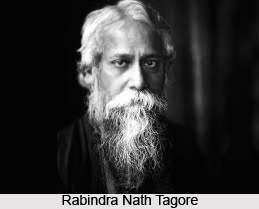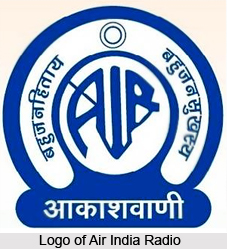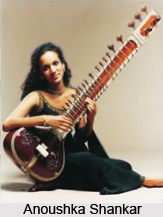 Music in Modern Age thrives to be the pillar of the ongoing fountain of musical endeavour in the civilization`s journey towards the adoption of culture of India. Modern developments of music owe its origin rights to the modernity in lookouts, globalization and the sways of multiculturalism which have strengthened the pillars of popular music and folk music.
Music in Modern Age thrives to be the pillar of the ongoing fountain of musical endeavour in the civilization`s journey towards the adoption of culture of India. Modern developments of music owe its origin rights to the modernity in lookouts, globalization and the sways of multiculturalism which have strengthened the pillars of popular music and folk music.
Modern developments in Indian music could be said to have begun with the songs of the world famous Indian poet, author and painter, Rabindranath Tagore. The lyricist and music composer of more than 2,000 songs drew his inspiration mainly from classical, folk, and devotional music. Uniqueness lied in the result as the individual expression in which words and melody blend together in an extraordinary way. The popularity of these songs in West Bengal, especially among the intellectuals, shows that they are not without sophistication, and succeed in their intent.
The most significant factor in modern music has been due to the influence of the mass media, particularly cinema and radio. Their influence is not limited to the cities. The influence of radio and FM channels are also responsible for the development and prosperity of modern music industry.
 Very early, with the introduction of sound films in the 1930s, the cinema industry in India discovered that if films were to be successful they had to include songs, and to this day nearly all successful productions are similar to the `musicals` of the West. The songs were initially taken from traditional Indian sources, folk, devotional, and classical, as well as `ghazals` and `qawwalis`, and were presented in a more or less traditional manner. New songs were, however, needed to suit the plot and action in the films and gradually new instrumentation and techniques were introduced. The influence of Western music was delayed, partly by the fact that India had no indigenous tradition of orchestral music, which involves lengthy compositions and accurate performance from notation. Neither of them were part of the training of the traditional Indian musician. There was also the lack of experience with harmony, counterpoint, and orchestration, techniques which the West had gradually developed over a period of several hundred years.
Very early, with the introduction of sound films in the 1930s, the cinema industry in India discovered that if films were to be successful they had to include songs, and to this day nearly all successful productions are similar to the `musicals` of the West. The songs were initially taken from traditional Indian sources, folk, devotional, and classical, as well as `ghazals` and `qawwalis`, and were presented in a more or less traditional manner. New songs were, however, needed to suit the plot and action in the films and gradually new instrumentation and techniques were introduced. The influence of Western music was delayed, partly by the fact that India had no indigenous tradition of orchestral music, which involves lengthy compositions and accurate performance from notation. Neither of them were part of the training of the traditional Indian musician. There was also the lack of experience with harmony, counterpoint, and orchestration, techniques which the West had gradually developed over a period of several hundred years.
It has been believed that music is based on harmony. In the early stages of the development of Indian music, the instruments of the orchestra were used in unison, with only occasional experiments with simple polyphony. The main function of the orchestra was to provide dynamic contrasts, and, by using different instruments, to vary the timbre of the melody line. In the course of time, however, there has been increasing use of polyphony and there have been many attempts to add harmony to Indian melodies. From the Indian point of view, however, the melody supplies the logic for the harmonies, and the use of harmony adds a new aspect to Indian music.
 In the modern Indian film songs, the melody generally retains its Indian character and the singer often uses traditional vocal ornaments. Even the accompanying orchestra shows a great deal of Western influence and may include Western instruments of all types. Indian musicologists are grabbing the trend of modern Indian music that has some Western influence.
In the modern Indian film songs, the melody generally retains its Indian character and the singer often uses traditional vocal ornaments. Even the accompanying orchestra shows a great deal of Western influence and may include Western instruments of all types. Indian musicologists are grabbing the trend of modern Indian music that has some Western influence.
For a number of years, film music was not broadcast on All India Radio. This policy was modified when it was discovered that A.I.R. was losing many listeners to the commercially controlled Radio Ceylon, which was presenting film music virtually all day. It is true that much film music is trite, and that some of the experiments are over-indulgent, but these are necessary stages in the development of a new tradition. In the meanwhile, the popularity of film music is on the increase, sometimes to the detriment of age-old music traditions. The policy of All India Radio has been to attempt to raise the cultural, artistic, and moral standards of the people of India. It is not only film music which has come under criticism, but certain aspects of classical music, for example the use of the Western-imported harmonium as an accompanying instrument for Indian music. In spite of the fact that this is one of the most widespread instruments in India, and that north Indian classical singers have been using it for at least forty years, it has been banned from the radio on the grounds that its more or less tempered tuning does not lend itself to the subtleties of intonation. Since this chapter was first written, All India Radio has changed this policy.
Music in modern India has a huge variation that is created keeping in mind the preferences of the new generation. To create a subtle difference in tunes and mood, the blend of tunes and faster beats are added. Sometimes, fusion is created with blending Indian classical music with western music. Keeping pace with the modern world, Indi pop music is also created. This type of music is created with the amalgamation of Indian and western pop music.
Music in modern India imbibes not only the western influence but in some cases the traditional Indian music are presented in the veil of modernity. Sometimes, `raga` and `taal` which are the most important parts of Indian music are removed from the latest compositions to make the music fit to the modern trend. The tunes, usage of some western musical instruments, words and the trend tend to create a new type of music though the replica of western and Indian fusion is always extant in them.




















